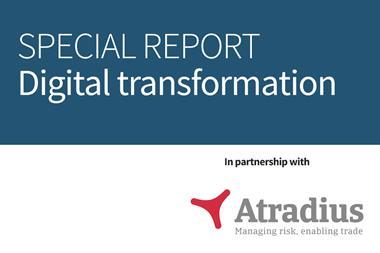Banks and other organisations are freeing up capital by working with the right insurance partners
Capital is a precious commodity, and risk transfer can help get the most out of it. To this end, insurers have been playing an increasingly prominent role in helping make banks and other financial institutions more capital efficient amid the regulatory environment since the financial crisis.
Through large, tailored transactions, the insurance market can help reduce the regulatory capital held against specific financing transactions. Zurich has taken a lead in this regard, Alessandro Castellano, global head of credit lines at Zurich Commercial, explained. “The question is how insurers and brokers can provide satisfactory solutions. There’s no one size fits all solution,” said Castellano.
Luigi Sturani, EMEA specialty CEO, Aon Risk Solutions, provided an example of how such a solution was designed, working with Zurich, to provide a financial institution client with portfolio protection, backed by a credit rating high enough to allow a reduction in the regulatory capital required.
“The bank had a portfolio of short term credit amounting to about $1bn,” said Sturani. “That portfolio was secured with traditional trade credit insurance. However, the ratings of the panel of insurers providing the coverage was not high enough to allow a lower capital requirement.”
Relying on its “AA-” credit rating, Zurich guaranteed the protection from any default among the portfolio’s original insurers. The insurer provided the biggest slice of $100m protection out of a backstop totalling $1bn placed for this deal.
“They were able to step in and secure the protection of the deal. In insurance terms it’s a contingency cover,” said Sturani. “That makes for a stronger and more secure structure because of the higher rating of Zurich. In turn, that allows bank to allocate lower capital to that portfolio.”
Castellano described this as having a doubly positive effect for the client involved. “There are the benefits from that specific transaction and for that portfolio, but the other effect is even more positive. It has the consequence of freeing up capital for entirely new transactions,” he said.
Tightened lending seen in recent years is partly a result of stricter regulatory capital constraints for banks. Insurers have gained ground through risk transfer deals in this period, representing a classic opportunity of insurance lubricating the wheels of markets.
“Credit risks are even more important than they used to be and banks are under regulatory pressure. In Europe, with the Basel III framework, it is not that banks have been unwilling to create new credit, they have just often been unable to do it. So there’s plenty more for us to do, and also other carriers,” said Castellano.
This opportunity is not confined to Europe, but has global implications, he suggested, with the guarantee in the same currency as the portfolio. “Emerging market debt is mostly denominated in US dollars. European banks providing US dollar funds are therefore at a disadvantage,” said Castellano.
The underlying risks also vary greatly: one transaction could be funding a refinery project; another might be mortgage credit; football clubs can even use such asset-based financing to accelerate transfer fees typically structured over several years. Mergers and acquisitions represent another opportunity, suggested Stuart Lawson, EMEA CEO of Aon Credit International, particularly for payment obligations deferred and amortized over several years.
“You may not be comfortable taking on the counter party risk of the company buying your business where a proportion of the purchase consideration is extended for a number of years. In these cases, we have successfully used the credit insurance and surety market to protect the seller if the buyer defaults on a future payment. This credit enhancement also allows the transaction to be far more attractive to banks to finance,” Lawson added.




















No comments yet